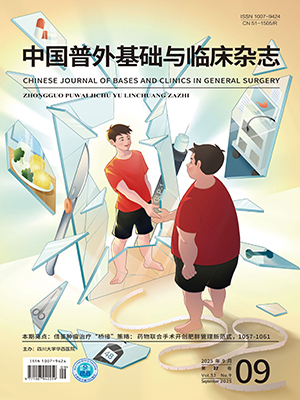ObjectiveTo study the concepts and pathophysiology of intraabdominal hypertension (IAH) and abdominal compartment syndrome (ACS). MethodsRelevant information was gathered from previous original articals,and by checking the latest issues of appropriate journals. Meantime computerised MEDLINE search from 1998 to August 2001 was conducted using the Medical Subject Heading and textwords “abdominal”, “compartment syndromes”, “intraabdominal” and “hypertention” and “pressure”.Then the literature in the recent two years about the advances of IAH and ACS were reviewed. Especially the concepts, pathophysiology and clinical application of IAH and ACS were mainly summarized.ResultsAkin to compartment syndrome, the pathophysiological effects of increased intraabdominal pressure developed well before any clinical evidence of compartment syndrome. These changes included ①reduction of gastrointestinal blood flow,②increase of respiratory airway pressure whereas decrease of pulmonary compliance,③decline in cardiac output but rise in peripheral vascular pressure,④oliguria even anuria,⑤increase of intracranial pressure,⑥decrease of hepatic blood flow,⑦decrease of abdominal wall compliance.ACS can be defined as dysfunction of various organs caused by a progressive unphysiologic increase of the intraabdominal pressure. Clinically the syndrome is characterised by inadequate ventilation, tensely distended abdomen and oliguria or anuria.Early decompression by simple laparotomy and delayed closure is the treatment of choice. ConclusionThe concepts of IAH and ACS have been increasingly accepted. They mainly affects the respiratory,cardiovascular and renal systems; secondarily affect gastrointestinal, central nervous systems,liver and abdominal wall. The reduction of cardiac output and pulmonary compliance are probably promoting factors inducing organ dysfunction.
Citation: YANG Xinping,JIANG Hongchi.. IntraAbdominal Hypertension and Abdominal Compartment Syndrome. CHINESE JOURNAL OF BASES AND CLINICS IN GENERAL SURGERY, 2002, 9(6): 451-453. doi: Copy
Copyright © the editorial department of CHINESE JOURNAL OF BASES AND CLINICS IN GENERAL SURGERY of West China Medical Publisher. All rights reserved




